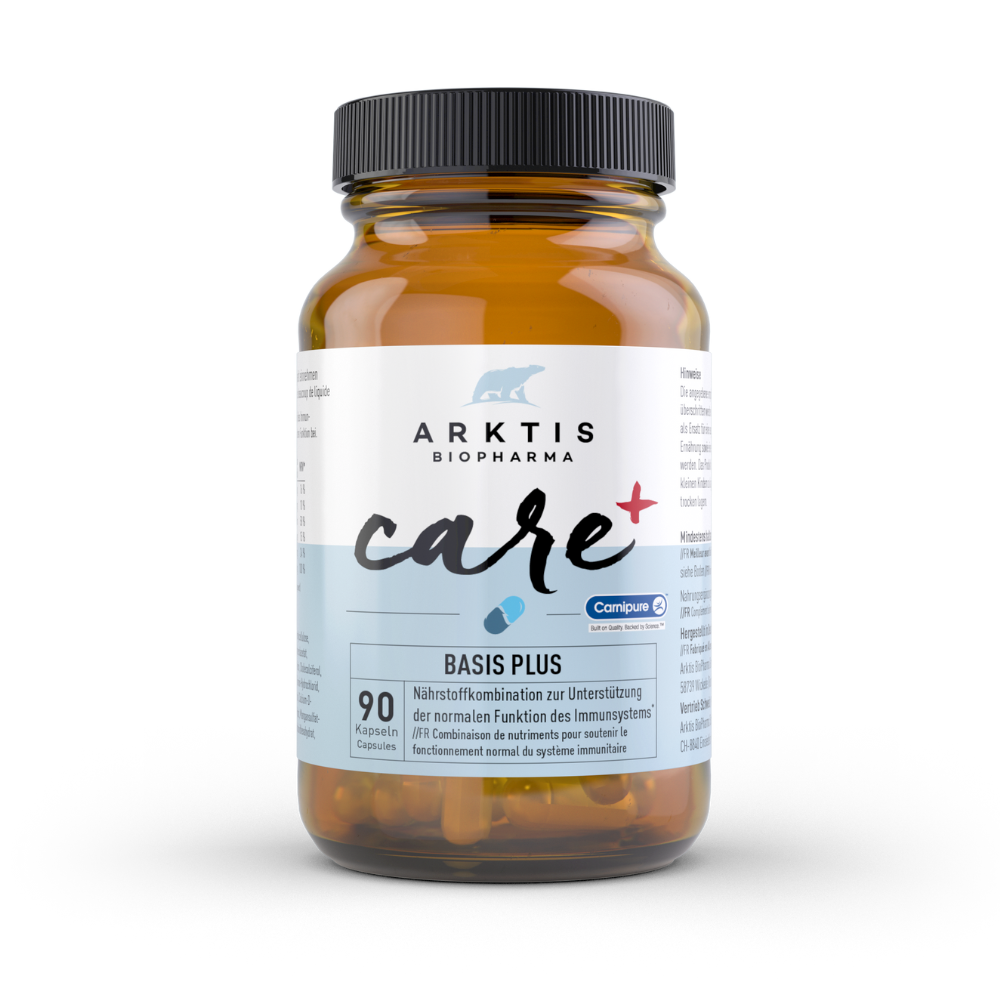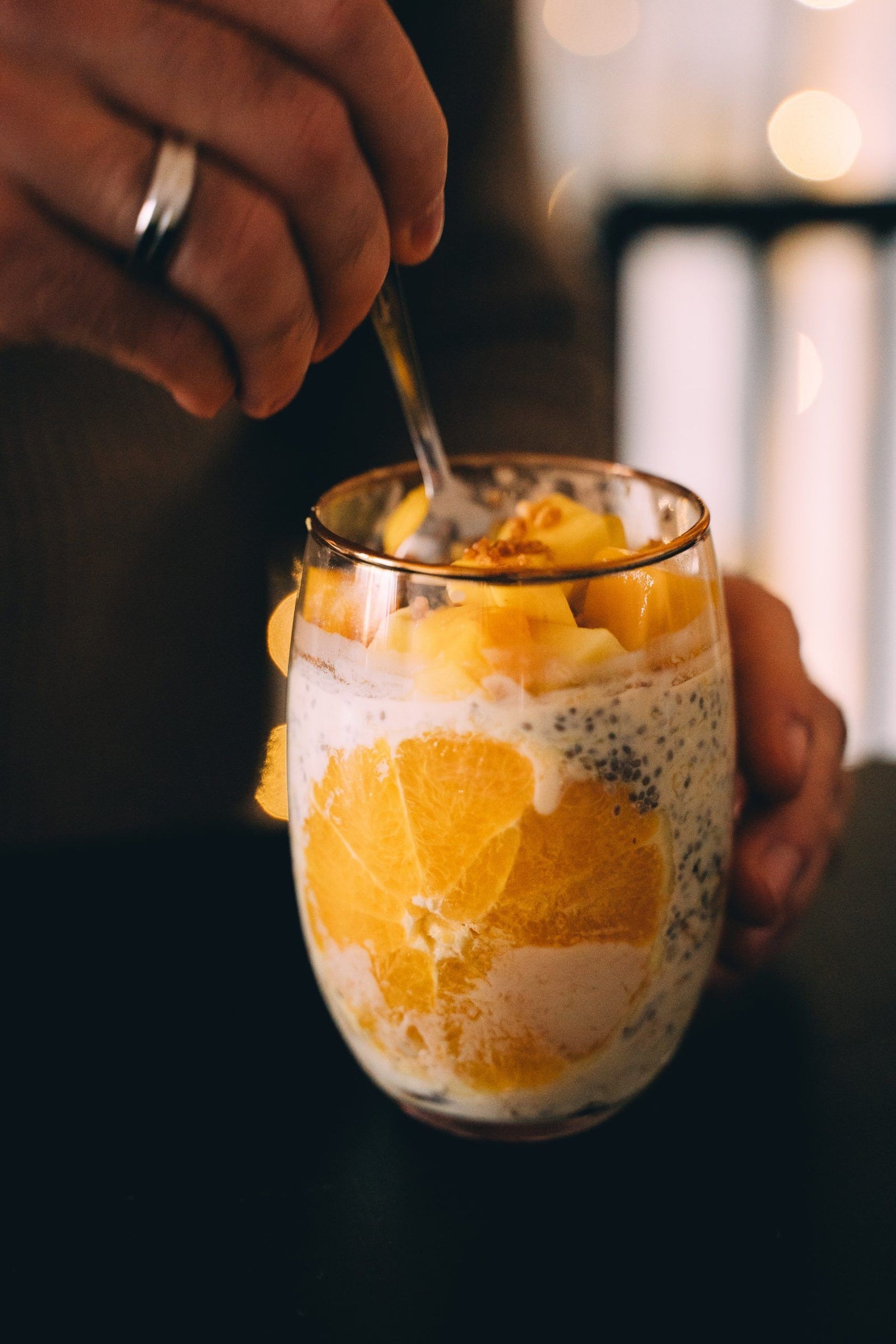The Mexican summer plant chia, with the botanical name Salvia hispanica L, is a member of the labiate family. Even the Aztecs and the Maya swore by chia seeds as an important source of food. They were the actual survival ration for the Aztec warriors: 2 tablespoons of seeds soaked in water strengthened a person for 24 hours. Alongside goji berries and many others, chia seeds are a nutritious superfood. There are white and black chia seeds, which do not differ in their nutrient content.
How healthy are chia seeds really?
Chia seeds contain around 40 percent carbohydrates, 20 percent protein and 30 percent fat. They contain five times as much calcium as milk, which is good and important for our bones.
| Nutritional values - For 2 tablespoons of chia seeds | |
|---|---|
| Calories | 111 |
| fat | 8 g |
| Carbohydrates | 9,6 g |
| - thereof dietary fiber | 8,4 g |
| - of which sugar | 0 g |
| Protein |
Chia seeds mainly provide filling fiber, as well as magnesium, phosphorus and protein. They also provide vitamin E, B1, B3, A and the trace element selenium, which has an antioxidant effect.
Do chia seeds contain healthy omega-3 fatty acids?
The answer is clearly yes! Chia seeds contain mostly plant-based omega-3 fatty acids and more than twice as much as salmon meat. Nutrition expert Linda Marx explains why a sufficient intake is so important: "The body cannot produce them itself, they have to be absorbed through food."
It should be noted that interactions with blood-thinning medication can occur. However, as chia seeds absorb 9 times their weight in water, this can lead to lumps, especially if they are stirred into a liquid. It is also important to use the chia seeds dry: drink enough!
So I think it's almost better to use the chia gel.
Are all chia seeds the same? How do you explain the different prices?
Not all chia seeds are of the same quality and contain the same amount of nutrients. Chia seeds need optimal soil and excellent climatic conditions to ensure high quality. These conditions are mainly found in South and Central America (e.g. Argentina, Bolivia, Ecuador, Mexico, Colombia).
Chia seeds grown in China can sometimes be cheaper. However, you should check whether a lot of pesticides are used and whether the nutrient content of the chia seeds from the countries of origin can keep up.
If in doubt, it is better to go for an "original" product.
Are there any major differences between linseed and chia seeds? And do chia seeds have to be ground first?
One advantage of chia seeds is their neutral taste, so they can be added to any dish without any problems. Linseeds, on the other hand, have a stronger flavor of their own, so they can enhance the taste of the food. can have a decisive influence on your diet.
We asked Dr. Weil, an American doctor who specializes in healthy nutrition, about the differences in nutrients between the two types of seeds. For Dr. Weil, chia seeds are ahead in the race because they are richer in antioxidants and omega-3 fatty acids.
There is also a decisive advantage: unlike linseed, chia seeds do not need to be ground in order to make good use of the nutrients.
Are chia seeds also good for animals?
Chia seeds are already frequently used as feed for horses - especially in the USA - due to their high nutrient content. It can therefore not be ruled out that chia can also be beneficial for other animals. Chia can be used as wet or dry feed.
What is the official maximum dose of chia? And why is there a maximum dose?
The officially recommended daily dose is 15 grams.
In 2010, the EFSA (European Food Safety Authority) approved chia seeds as a novel food, i.e. as a food that was not marketed for consumption to any significant extent within the EU before the Novel Food Regulation came into force. At that time, it was stated that it could only be used as an additive in bread (up to 5%)
In 2013, the approval was extended and it was specified that chia seeds could be used as follows: 10% in baked goods, 10% in cereals, 10% in nuts and fruit and 15 g pure as a recommended daily dose. To our knowledge, however, this restriction is not based on any study. Officially, however, it is now the case that chia seeds must always be sold with the information that a daily dose of 15 g should not be exceeded. Incidentally, this corresponds to about 2 tablespoons of chia.
What happens if you give your body more chia than the recommended daily dose?
The recommended daily dose is fine. In principle, however, there is no harm in eating a little more chia seeds in one day. It is the same as with many good things that you put into your body: If you overdo it with the well-intentioned, the effect is reversed and can possibly have a negative impact.
Chia seeds, for example, contain a lot of fiber (ours contain 33.7 grams per 100 grams). Too much fiber removes a lot of water from the intestines, which cannot be made available to the body. This could possibly result in constipation. But then it would have to have been a lot of chia seeds and very little liquid that day
Chia seed gel
Stir 1/3 cup of chia seeds with 2 cups of water in a container so that there are no lumps and leave to stand for 10 minutes. You can use it now or leave it to swell for a few more hours, which will make even more nutrients available.
This basic recipe makes about 500g of chia gel and can be stored in a sealed container in the fridge for about 5 days and removed as required. You can eat about 2 tablespoons of chia gel a day, increasing it if necessary.
Chia seeds can also be used to make desserts, as they have a similar effect to gelatine when mixed with water.
The many ways you can use chia seeds
Chia seeds can be added to your diet in many different ways. The seeds are tasteless and therefore do not really interfere with any dish.
The easiest way to do this is to use chia seeds, if you simply sprinkle the chia seeds as they are over a salad or stir them into a juice or smoothie.
Chia seeds in yoghurt, chia pudding and chia muesli are delicious ways to have a healthy breakfast.
You can also add chia seeds to pestos and sauces. Or add them to baking mixes and use them to enhance bread or cakes.
Why you should eat chia seeds regularly
I can only recommend that you make sure you eat chia seeds regularly. Here are 9 good reasons to do so:
1. As mentioned above, chia seeds provide a high content of omega-3 fatty acids and also contain omega-3:omega-6 fatty acids in an ideal ratio of 3:1.
2. They contain large amounts of nutrients such as calcium, magnesium, copper, zinc and iron. The trace element boron also supports calcium absorption. The seeds are also said to have hormone-regulating, immune-boosting and muscle-healing effects.
3. The seeds are said to have a positive effect on blood sugar levels, as the soluble fiber they contain slows down the breakdown of carbohydrates into sugar and thus provides long-lasting energy. This effect could be interesting for athletes as well as for people with regular cravings or diabetics. Endurance performance in sport improves and the desire for sweets or junk food decreases noticeably.
4. Thanks to their neutral taste, they can be added to any food. They increase the satiety effect of food and can therefore also indirectly help you lose weight.
5. They provide twice as much protein as other seeds or grains. Chia seeds even provide good amounts of all 8 essential amino acids.
6. Chia seeds are gluten-free. This makes them a good alternative to protein-rich grains for people with gluten intolerance.
7. Chia seeds can aid digestion. By swelling, the seeds increase their volume by nine to twelve times within ten minutes and thus increase the stool volume. The soluble fiber helps to prevent constipation or diverticulitis and has a cleansing effect on the intestinesby supporting the elimination of deposits. This means that more nutrients can be absorbed again. They can also alleviate heartburn without undesirable side effects.
8. If you soak chia seeds before eating them, they can also store large amounts of fluid and are therefore said to help maintain the body's water balance, especially during exertion, without being heavy on the stomach.
9. Thanks to the powerful antioxidants they contain, chia seeds can easily be consumed four times a day. Chia seeds can be stored for up to five years without losing their nutritional value, taste or smell (unlike other seeds, such as linseed, which quickly turn rancid).
Solve digestive problems with chia seeds
As you have just read, chia seeds can positively support your digestion. And if you feel the same way as many other people, then this could even be the main reason why you came across the topic of chia seeds in the first place.
And even though chia seeds work really fantastically, I would still recommend that you take a closer look at your diet as a whole if you suffer from constipation, diarrhoea, flatulence or something similar, and don't "just" eat chia seeds.
Would you like to try chia seeds yourself? You can get the seeds in a health food store or organic food store, sometimes even in the supermarket. But please make sure they are organic.
Have you tried chia seeds yet? Let me know what you've done with them!

















